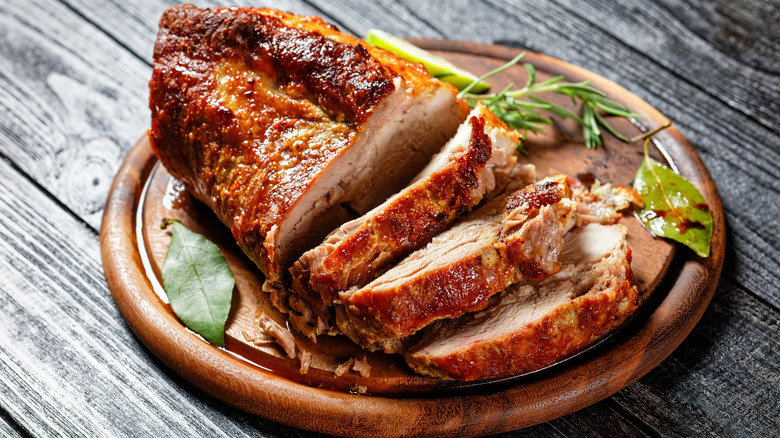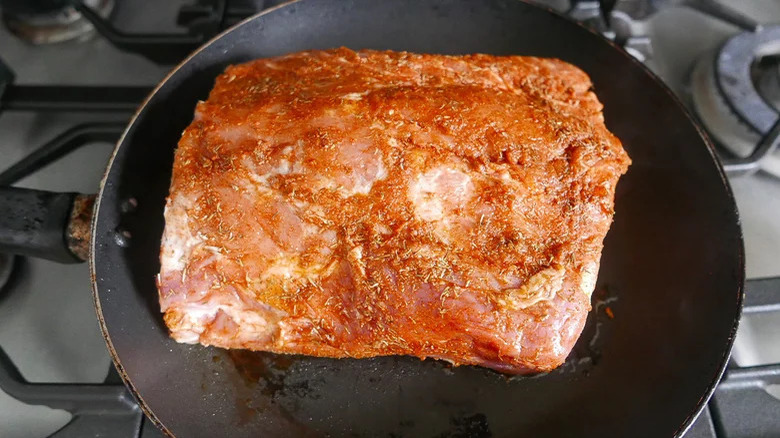The 2-Step Method For Perfectly Cooked Pork Tenderloin
When cooked properly, pork tenderloin should be tender and mouth-wateringly juicy, with a mild, meaty flavor as a brilliant backdrop for marinades and dry rubs. Unfortunately, not everyone knows how to cook pork tenderloin in a way that optimizes its taste and texture.
Our slow cooker pork tenderloin recipe illustrates one of the optimal cooking methods for this cut. It starts with a sear to seal in the juices and encourage the development of the caramelized crust that's considered fundamental to pork tenderloin. It then braises in low ambient heat for five hours to reach its optimum internal temperature, between 145 and 155 degrees Fahrenheit.
But maybe you don't have five hours of cooking time to spare. Or perhaps you're not a fan of the wet braise, the slow cooker method's default. In that case, you're in luck because we've got a two-step method for perfectly cooked pork tenderloin that will take you no more than half an hour of cook time. Like the slow cooker recipe, it begins with a sear. However, unlike the slow cooker recipe, it reaches optimal juiciness and maximal flavor through dry roasting.
Perfect pork tenderloin in two simple steps
Step one of our two-step method for perfectly cooked pork tenderloin starts by heating a sturdy stovetop pan to medium-high and searing the meat on all sides until it develops a rich, browned crust. This can take up to eight minutes, according to Epicurious, so step one of our two-step method for perfectly roasted pork tenderloin can be summed up as "sear with patience."
Step two involves roasting at a high temperature — 450 degrees Fahrenheit but only briefly. And by brief, we mean about 10 minutes – but no longer than it takes for the meat to reach an internal temperature of 145 Fahrenheit before letting it rest for five minutes. Accordingly, you'll want to have a meat thermometer on hand and keep your focus on the clock and your oven.
All of this assumes that you're starting with a nice pinkish-red cut of tenderloin. It also assumes you know how to avoid the biggest pork tenderloin pitfall: not removing the silvery connective tissue membrane that's almost always found surrounding this cut of pork. But suppose you've got a beautiful piece of meat and trim away the "silver skin," as it's known. With this fast and easy two-step method, you can look forward to a perfectly cooked pork tenderloin that comes together in record time, whether for a weekday dinner or an impressive weekend feast.

